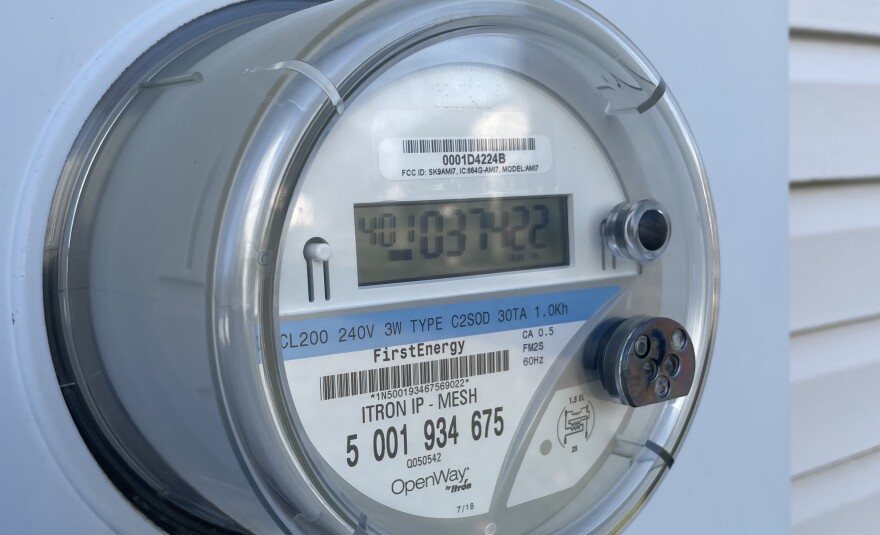EASTON, Pa. — Easton officials are looking for answers to power problems following an outage that left some city residents in the dark for nearly two days last weekend.
Easton City Councilman Frank Pintabone has called upon Mayor Sal Panto Jr. to arrange a meeting with energy supplier Met-Ed to discuss issues with the city’s grid and how the company addresses outages.
The call comes after a weekend when several pockets of the city went without power up until Sunday night.
“It was cold, and a lot of people, elderly people, were reaching out because they didn’t have heat.”Easton City Councilman Frank Pintabone
The outages were found to not be weather-related, but Pintabone and other city officials pointed out that winter conditions made the problem especially difficult for vulnerable citizens across the city.
Pintabone said the event “wasn’t a major outage throughout the whole city,” but still, “it was cold, and a lot of people, elderly people, were reaching out because they didn’t have heat.”
He said he felt there were far more issues with electricity in the city over the past two decades than before, where “it’s almost like once a week there’s power outages somewhere in the city.”
Meeting in the works
Panto and City Administrator Luis Campos reached out to Met-Ed for a meeting, Pintabone said, and Met-Ed/FirstEnergy Corp. spokesman Todd Meyers confirmed that arrangements are being made.
“I would just like to sit down and have a conversation, meet with our reps, and learn how the process works to gain a better understand."Easton City Councilman Frank Pintabone
“I want them to understand how impactful it is to our residents," Pintabone said.
"And to make sure they're aware of that and see if there's maybe something that can be done to minimize the amount of outages we have."
He said it would be reassuring to simply have a better idea of how Met-Ed addresses outages, so that information could be conveyed properly to residents, as opposed to automated messaging updates that rarely provide proper explanations for interruptions.
“I would just like to sit down and have a conversation, meet with our reps, and learn how the process works to gain a better understanding,” Pintabone said.
'We want them to work'
Panto said he would like to see himself, Pintabone, Campos and Public Works Director Dave Hopkins in the meeting in order to get a better picture of the state of the power grid.
According to the mayor, the question of upgrades to the grid funded by developers could be an issue “if they’re not going to upgrade the rest of it.”
The mayor also raised questions about population density and the demand on the grid.
“This Downtown was much, much more densely populated when we had all the houses pre-urban renewal," Panto said.
"I mean, we had industry all along the river. There’s definitely less electricity being used now than there was back in the 50s."
Blackouts of any size aren’t the only issue, Panto said.
Even something as minor as a streetlight outage can take weeks to see a repair job, “and the city pays a tariff, $18 per light per month, whether they’re working or not, and obviously we want them to work.”
Winter blackout
Meyers attributed the weekend blackout to a line stemming from the Lafayette substation experiencing problems that officials thought were due to a bad switch.
“So what we did initially was we found a switch that was bad, and when we repaired the switch and tried to bring those customers back on, we found that was not the problem," he said.
"The problem was with some of the underground wire, and it was the damage on that underground wire that damaged the switch above ground."
Meyers said reports for outages started coming in around 5:30 a.m. Saturday, Jan. 4, and power was restored to The Commodore apartments and other customers by about 8 p.m.
Another apartment complex saw customers waiting until about 8 p.m. Sunday, Jan. 5.
Dealing with underground wiring is more difficult to address, Meyers said, which led to delays in restoration times.
Issues with above-ground setups are much easier to address, whereas the underground lines require a multistep process to fix properly, he said.
A tradeoff
The tradeoff comes from the fact that the underground lines are generally more reliable than above-ground lines, Meyers, said, especially during the winter months.
“However, there are unique challenges with those networks, and sometimes they can take longer to figure things out and make repairs, just because of the nature of what needs to be done,” Meyers said.
“When we make the fix, we bring on the largest number of customers, and then we work down to the next size outage."Met-Ed/FirstEnergy Corp. spokesman Todd Meyers
He said tightly packed lines “almost like the size of a person’s arm” can actually crack an underground conduit and create “all kinds of problems that you don’t have above the ground.”
With customers concerned about getting by without power during a chilly weekend, Meyers said crews were on site for 16-hour days dealing with outages based on priority.
“When we make the fix, we bring on the largest number of customers, and then we work down to the next size outage," he said.
"And it's not that the ones on the end are not important to us, but if you consider a country lane that might have six poles down, but you have eight customers at the end of that lane, you might have been able to use those five or six crews better to get thousands of customers on."
He said Met-Ed “appreciates our customers’ patience… and we want to let them know we’re doing our utmost to prevent this in the future.”


